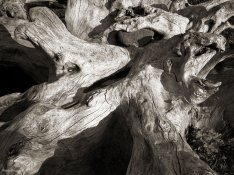Paul Ozzello
Member
Hi all,
In my quest for making 40" prints from drum scanned rollfilm, I want to try some of the ultra high resolution technical films. How do the latest films compare to Kodak Tech Pan/Technidol ?
What are the differences between Agfa Copex Rapid, Adox CMS 20, Rollei ATP1.1 ? Is one particularly suited to pictorial photography ? And which developers work best with each film (for pictorial use). Are there any other tech films I left out ?
Paul
In my quest for making 40" prints from drum scanned rollfilm, I want to try some of the ultra high resolution technical films. How do the latest films compare to Kodak Tech Pan/Technidol ?
What are the differences between Agfa Copex Rapid, Adox CMS 20, Rollei ATP1.1 ? Is one particularly suited to pictorial photography ? And which developers work best with each film (for pictorial use). Are there any other tech films I left out ?
Paul











 I recently saw an exhibit with prints this size made with a Hasselblad and the detail was very decent even up close. I don't mind a little loss of detail and even some grain, I just want to get the best image possible with the equipement I have (Hasselblad V). I've sent some of my negs out for scanning and should have them back tomorrow. They were done with Rollei Pan 25 and developped in Rodinol, shot on a tripod with cable release, I can barely begin to see the grain with a 15X loop, and the detail is fantastic. They're being scanned on a Heidelberg D7100 at roughly 5400 ppi, and the operator is supposed to be quite experienced. I'll be doing a lot of postprod over the weekend and having them printed next week.
I recently saw an exhibit with prints this size made with a Hasselblad and the detail was very decent even up close. I don't mind a little loss of detail and even some grain, I just want to get the best image possible with the equipement I have (Hasselblad V). I've sent some of my negs out for scanning and should have them back tomorrow. They were done with Rollei Pan 25 and developped in Rodinol, shot on a tripod with cable release, I can barely begin to see the grain with a 15X loop, and the detail is fantastic. They're being scanned on a Heidelberg D7100 at roughly 5400 ppi, and the operator is supposed to be quite experienced. I'll be doing a lot of postprod over the weekend and having them printed next week.






